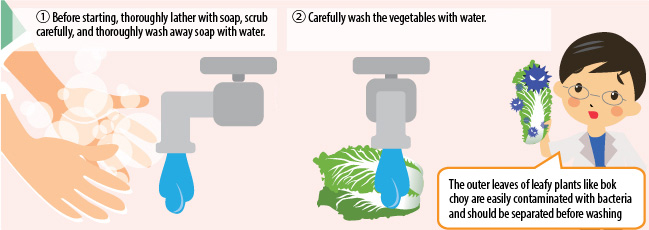Tokyo Food Safety Information Center » Tokyo Metropolitan Government food safety FAQ » What should I be careful about when making pickles at home?
What should I be careful about when making pickles at home?

What should I be careful about when making pickles at home?

When making pickles, it is important to prevent bacteria which cause food poisoning from getting mixed in. Be sure to observe the following points.
1. Your hands are covered in a variety of bacteria. When washing your hands before making your pickles, thoroughly lather with soap, scrub carefully, and thoroughly wash away the soap with water. In addition, using disposable gloves is very effective at preventing food poisoning.
2. Carefully wash the vegetables with water. The outer leaves of leafy plants like bok choy are easily contaminated with bacteria and should be separated before washing.
Be sure to sterilized implements and containers with boiling water or other means before use.


In the past, pickles were made with salt concentrations of 10% or higher, which prevented bacteria which cause food poisoning from multiplying.
In recent times, however, reducing salt content has been promoted as healthy, and pickles are made with salt concentrations of around 3 to 5%. Accordingly, most pickles, although they are thought to be well-preserved and to have a long shelf life, should be stored at low temperatures and eaten as soon as possible.
Even when making pickles at home, particularly lightly pickled pickles have a low salt concentration and should be stored in your refrigerator and eaten as soon as possible. When they cannot all be eaten at once, only take out the portion you intend to eat.